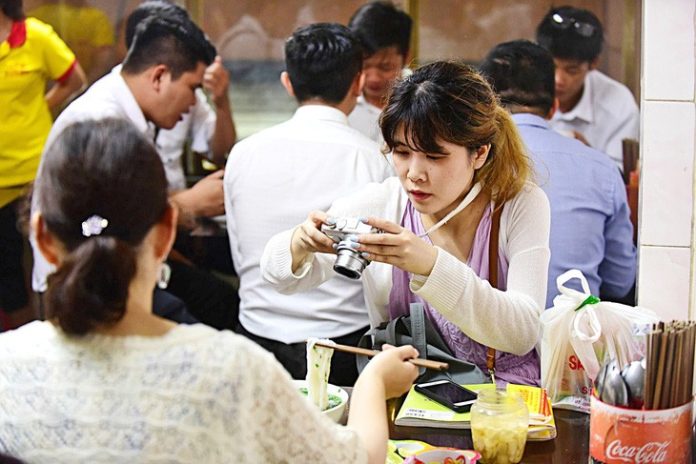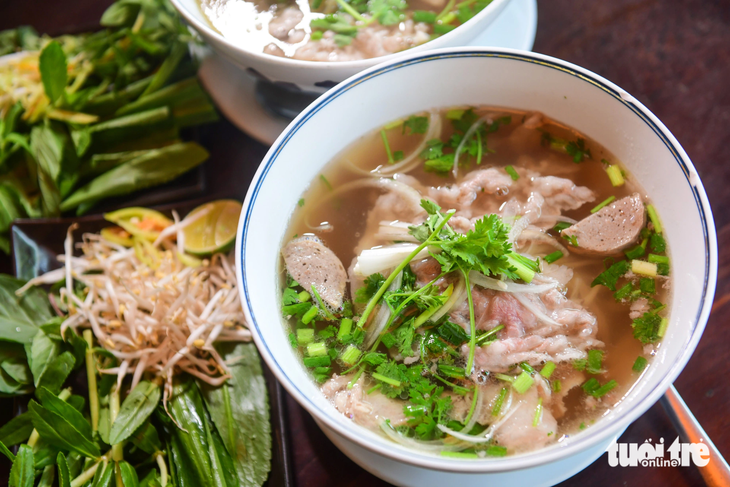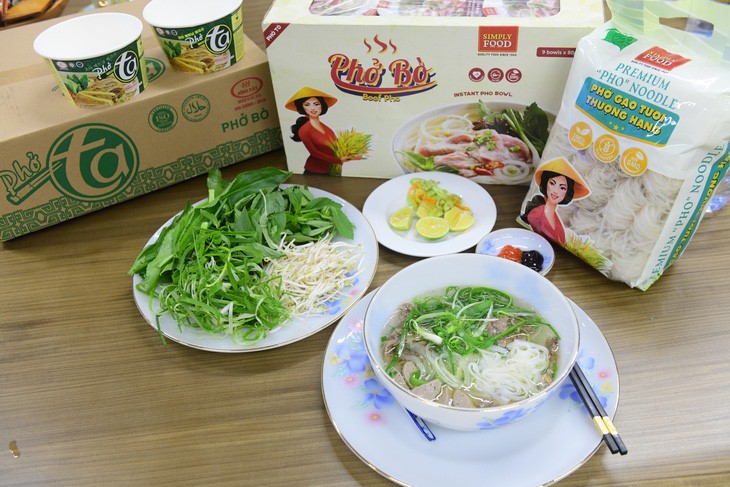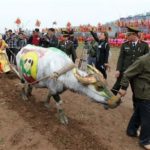Hiroe K. from Tokyo had previously resided in Hanoi before relocating to Ho Chi Minh City. While in Hanoi, she frequently opted to dine in and didn’t often eat out. However, on the occasions when she did, she would invariably select pho as her preferred choice.
Hiroe enjoys eating pho, a Vietnamese dish, once to twice per month.
She has a particular interest in the traditional Vietnamese dish known as pho, especially when she is in Ho Chi Minh City.
“It is fascinating how I can conveniently locate a pho restaurant just steps away from my home. My acquaintances frequently suggest trying pho with flank steak, brisket, and beef tendon, yet I struggle to recall these variations. Consequently, I tend to opt for a special bowl of pho,” she remarked.
“The dish is aptly named for its diverse selection of beef options, making it truly special. Its flavors are remarkably delicious, ensuring a delightful culinary experience.”
Hiroe discovered a notable distinction between pho in Hanoi and Ho Chi Minh City. In Hanoi, pho is served without herbs, while in the southern city, pho restaurants offer diners a selection of herbs, hoisin sauce, and chili sauce.
According to Hiroe, the pho in the southern region tends to be sweeter and possesses a milder flavor compared to the version found in Hanoi.
Hiroe and her friends often opt for branded pho restaurants, whereas local residents typically have a preference for traditional establishments.
Hiroe recommends that Vietnam should invest in establishing a network of restaurants specializing in traditional Vietnamese cuisine such as pho. She highlights the importance of the restaurant’s ambiance and space, as it plays a crucial role in attracting international customers.
|
|
| ‘Pho’ in southern Vietnam is often served with bean sprouts and herbs. Photo: Quang Dinh / Tuoi Tre |
Kaoru Tsunoda, residing in Tokyo, enjoys indulging in the delectable delicacy of pho for her weekend breakfasts. A regular at a pho restaurant located conveniently near her residence, she often takes the leisure of strolling over to savor the delightful Vietnamese soup.
She often selects established restaurants that have a large local clientele.
Kaoru noted that pho is most enjoyable when it rains. The warm soup, combined with the distinct flavors of pho, creates an enhanced culinary experience.
Kaoru stated, “I have a preference for beef pho over chicken pho.”
“I frequently prefer well-cooked beef pho over rare pho. I also have a fondness for pho with beef balls.”
During the COVID-19 pandemic, I purchased frozen beef balls to enhance the flavor of my soups. This delightful discovery was prompted by my fondness for pho.
Kaoru mentioned that Vietnamese beef is known for its freshness and tenderness. It is also relatively lean and not excessively fatty. Her personal favorite is the delightful soft noodles that complement the beef perfectly.
“An intriguing aspect is that every pho restaurant provides noodles with distinct thickness levels, piquing the curiosity of pho enthusiasts and inspiring them to explore a diverse range of flavors,” she elaborated.
“It offers a captivating culinary experience that entices you to embark on a delightful exploration of various flavor profiles.”
Although Kaoru has never cooked pho at home as it is not easy to prepare the broth, her friends often prefer to buy and simmer beef bones to create a flavorful base for their noodles.
Some individuals enjoy having instant pho at home for their teatime.
One popular choice for busy Japanese housewives in their kitchens is instant noodles. When visiting Vietnam, many also enjoy incorporating instant pho into their quick and convenient meals.
In Ho Chi Minh City, there are several Vietnamese food cooking classes specifically catered to Japanese individuals. Many participants have successfully gained the skills to prepare traditional Vietnamese dish called “pho”, which they can now showcase to impress their friends, as shared by Kaoru.
“I know someone who traveled all the way from Japan to Hanoi to learn the art of cooking authentic Vietnamese pho. She firmly believes that consuming dishes made from beef bones can aid in addressing certain health issues.”
Pho is not only delicious but also nutritionally rich.
|
|
| Instant ‘pho’ is a favorite dish of many families. Photo: Quang Dinh / Tuoi Tre |
The Vietnam Phở Festival 2023, commemorating the seventh edition of the celebrated ‘Day of Pho’ on December 12, is an annual event organized by Tuoi Tre (Youth) newspaper. It is set to be held at Yoyogi Park in Tokyo, Japan on October 7 and 8 this year.
The purpose of this event is to elevate the worldwide appreciation for Vietnamese culinary culture, with a specific focus on the beloved dish of pho. Pho is an iconic Vietnamese soup that features a flavorful broth, delicate rice noodles, aromatic herbs, and a choice of meat, typically beef or chicken.
The festival is a meaningful celebration marking the 50th anniversary of diplomatic relations between Vietnam and Japan.
The event has been jointly organized by Tuoi Tre and Saigontourist Group, in collaboration with the Vietnamese Embassy in Japan, the Vietnamese Ministry of Foreign Affairs, the Vietnam-Japan Friendship Association, and our valued Japanese partners.
The Vietnam Phở Festival 2023 has an impressive lineup of chefs and award-winning recipients, including Nguyen Tien Hai, Nguyen Tu Tin, and Pham Quang Duy who have received the prestigious ‘Hoa Hoi Vang’ (Golden Star Anise) accolade. Additionally, renowned phở brands such as Pho Dau, Pho Hai Thien, Hotel Majestic Saigon, Pho Phu Gia, Pho’S, Sen SASCO, Pho VGCC, and Pho Thin Bo Ho, among others, will be in attendance.
We are excited to announce the upcoming festival, which will be held in collaboration with national carrier Vietnam Airlines, Suntory Beverage & Food, Simply Food, Southern Airports Services JSC, Dai-ichi Life, and ALSOK.
Le Nguyen Bao Ngoc, the reigning Miss Intercontinental 2022, has been appointed as the official ambassador for this year’s festival.
 |











